Becca Hillburn's Blog, page 4
February 6, 2020
Notes on Hourly Comic Day 2020
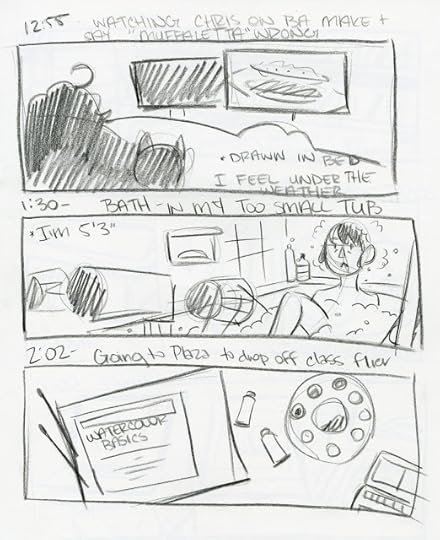
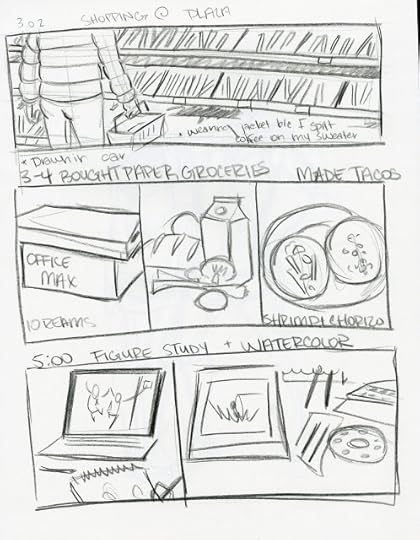
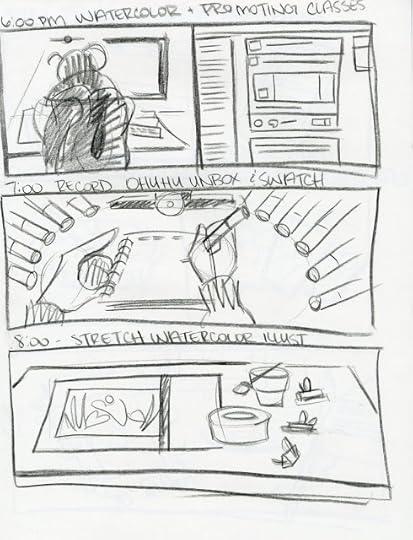
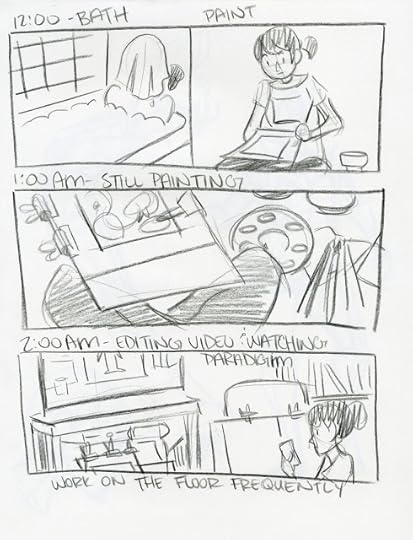
Notes on Hourly Comics:
Gives structure to my day- it forces me into a routine, which is both great for ADHD and not so great for my usual work methodsI'm guilty of doing more 'fun' things on Hourly Comic Day so I have something interesting to drawAlso very distracting- it's weird to stop work every hour to quickly draw more work- it's not like it's a real break.Makes it obvious that my schedule is WEIRD.Try to keep it simple and sketchy so I can at least get other work done- it seems like some folks literally dedicate their day to making attractive Hourly Comics, but I draw too slow for thatNice to break up my normal routine of very polished comics with a lot of process and steps to just sketch autobioTry to work in a different format- color pencil, in the sketchbook, super sketchy
Hourly Comics of Days Past:
Hourly Comic Day 2014
Hourly Comic Day 2016
Hourly Comic Day 2017

Published on February 06, 2020 13:22
February 3, 2020
Upcoming Classes in Nashville, TN
I have a busy Spring ahead of me here in Nashville! Joseph and I are wrapping things up here in Tennessee and preparing to get married and move back to Louisiana. In the meantime, I wanted to say goodbye with a bang! These classes are your last chance to take an art class with me in person in Nashville, TN, and I have a little something for anyone who might enjoy this blog!
Please register for classes early to ensure your place in class. Since I'm responsible for printed templates and resources, and provide most class materials, it's helpful to have a good idea of how many students are attending, so I can prepare ahead of time. If you’d like one on one critique or advice, please make sure you bring examples of your work (physical is best) and show up a bit early so I have time to help you!
For Plaza classes: If you would like to register someone under the age of 13, please register for the class with them. Kids are welcome, but only if accompanied by a parent or guardian.
All other classes in this post are for teens and kids.
Classes are for February-May 2020 and are subject to change. Please register in advance to secure your seat and to allow me to properly prepare in advance. If you have any questions or need more information, feel free to email me!
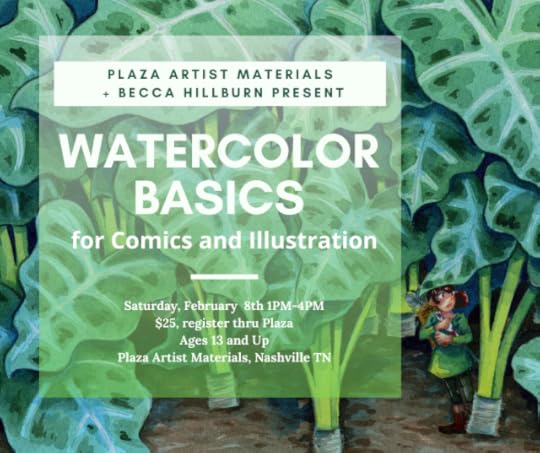
Watercolor for Comics and Illustration
February 8th- 1PM-4PM
PlaZa Artist Materials
Nashville, TN
$25 admission, supplies provided
Register through email-nashvilleclasses@plazaart.com or call 615-254-3368
All ages welcome, but children under 13 need to register with a guardian
Have you always wanted to learn how to use watercolor for illustration and comic art? Or maybe you know someone who loves traditional media art and would be interested in expanding their experience?I’m teaching a class on watercolor for comic and illustration art through Plaza Artist Materials in Nashville, TN, on Saturday, February 8th! It's called How to Use Watercolors on the schedule. Even if you know absolutely nothing about watercolor, you’re welcome to sign up and take this class! We’ll be providing everything you need for three hours of watercolor fun including paints, papers, and snacks! If you want to learn how to use your own watercolor supplies, bring them along! The class is from 1-4PM, and I welcome artists of all ages and experience levels to come learn the secrets to watercolor for comics.I’ll provide you with a list of recommended supplies, if you want to start shopping after the class is over, and once you get home, you can explore years of watercolor tutorials and reviews to help bolster your studies on Nattosoup Studio Art and Process Blog and my Youtube channel. And of course, you’re welcome to reach out to me via email!
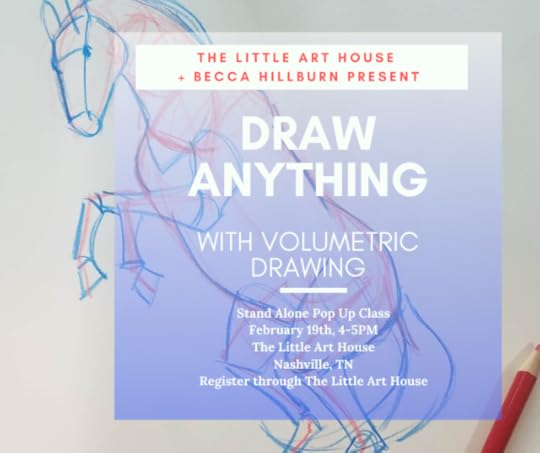
Learn to Draw Anything
Standalone Pop Up Class
February 19th, 4-5PM
The Little Art House
Nashville, TN
Register through The Little Art House
Price TBA
Want to learn how to draw, or level up your art? I'll teach you the magic secret that they don't teach you in public school art classes! Everything in our 4D world is made up of pretty basic 3D shapes that can be drawn on 2D paper. I'll show you how to break complex objects down into those basic shapes, and teach you how to draw them. When you leave this class, you'll see the world in a whole new way!
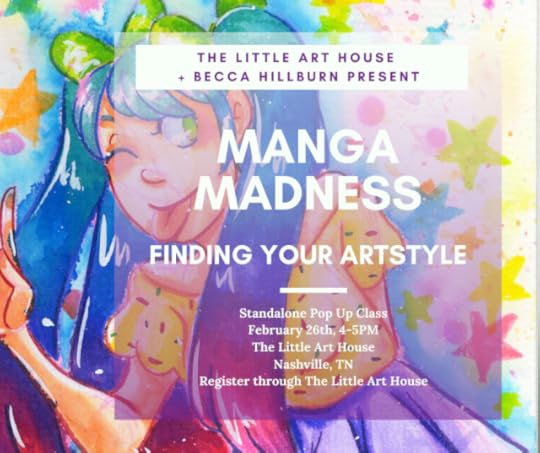
Manga Madness
Standalone Pop Up Class
February 26th, 4-5PM
The Little Art House
Nashville, TN
Register through The Little Art House
Price TBA
Love anime and manga? Trying to find your own art style? In this standalone class, I'll show you how to draw your own characters and teach you the basics of constructing faces and facial proportions. Once you have the basics down, it's easy to tweak it to suit your taste and drawing style!
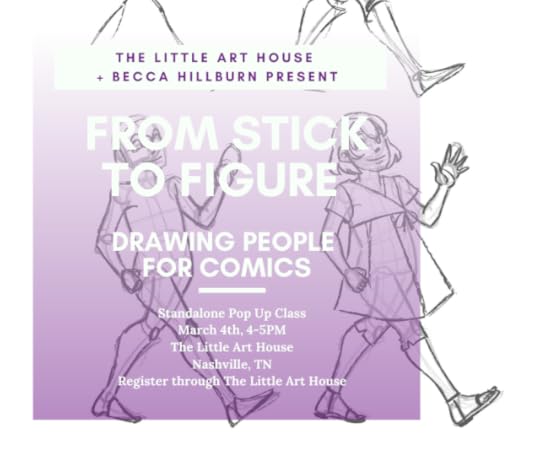
From Stick to Figure
Standalone Pop Up Class
March 4th, 4-5PM
The Little Art House
Nashville, TN
Register through The Little Art House
Price TBA
Want to learn how to draw people? Interested in designing your own original characters? This class will show you how to go from stick figure to character design! In this hour long class, we're going to focus on capturing gesture and form, as well as answering your figure drawing questions!
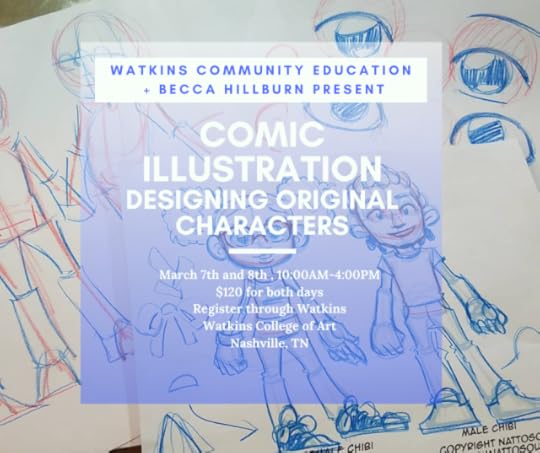
Comic Illustration: Designing Original Characters
March 7th & 8th, 10AM-4PM
Watkins Community Education
Nashville, TN
Register through Watkins Community Education
A weekend crash course on drawing and designing characters for comics and illustration! On Saturday, we're going to focus on figure drawing and understanding the human form using constructive anatomy- great for posing characters! On Sunday we're turning our focus to facial construction, designing faces, and finding your style!
This weekend drawing camp is perfect for young artists who need extra guidance or encouragement to get started on their projects. Classes are held at Watkins College of Art- the perfect setting to inspire.
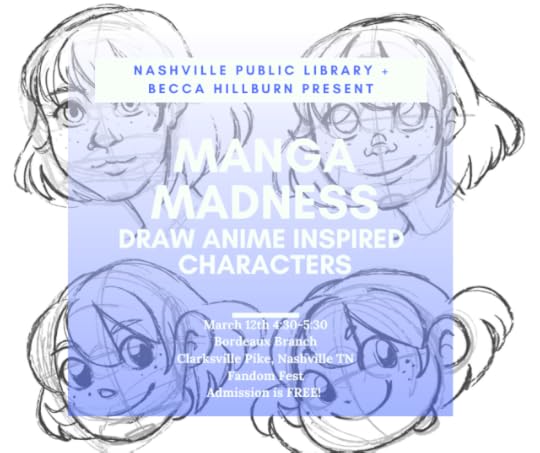
Manga Madness
March 12th- 4:30-5:30
Bordeaux Branch Fandom Fest
Nashville, TN
Free!
This class is more than just manga! Part of Nashville Public Library's Fandam Fest, I'll show you how to construct and draw your own characters in this free hour long workshop! Bring your sketchbooks and be prepared to draw!
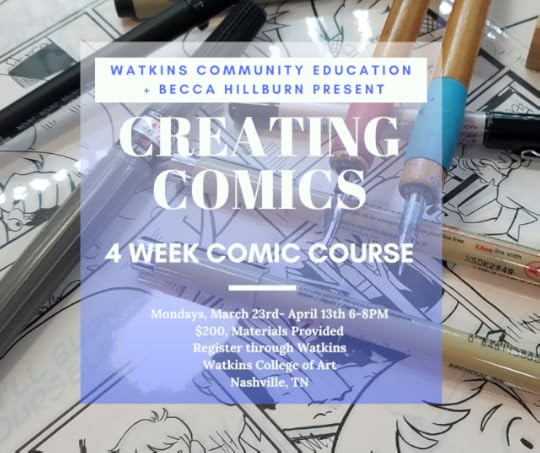
Creating Comics
Watkins 4 Week Comic Class
Mondays, March 23rd- April 13th 6:00PM-8:00PM
Watkins Community Education
Nashville, TN
Register through Watkins Community Education
Know a young artist who'd like to start their comics journey? Or maybe someone who needs a bit of support and encouragement to get started? This four week comic class, hosted by Watkins Community Education, will walk aspiring comic artists through the basics, giving them the foundation they need to get started. Get help with the comic process and hands on experience with the tools of the comic trade!
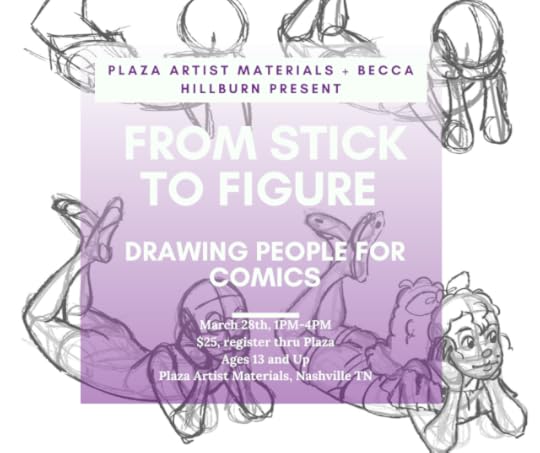
From Stick to Figure
March 28th, 1-4PM
PlaZa Artist Materials
Nashville, TN
$25 admission, supplies provided
Register through email-nashvilleclasses@plazaart.com or call 615-254-3368
All ages welcome, but children under 13 need to register with a guardian
Learn how to go from stick figure to comic character in this three hour drawing workshop hosted by Plaza Artist Materials. This is a deeper dive into figure drawing and construction. Feel free to bring snacks and your favorite sketching materials!
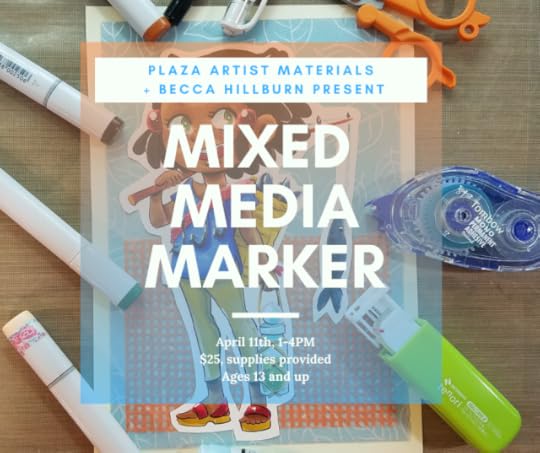
Mixed Media Marker
April 11th, 1-4PM
PlaZa Artist Materials
Nashville, TN
$25 admission, supplies provided
Register through email-nashvilleclasses@plazaart.com or call 615-254-3368
All ages welcome, but children under 13 need to register with a guardian
My last marker class in Nashville, so sign up while seats are available! In Mixed Media marker, get hands on experience with alcohol markers like Copics and Prismacolor, and learn new techniques to really make your marker art pop! From watercolor to color pencils to chiyogami paper, take your marker illustrations to the next level with creative solutions.
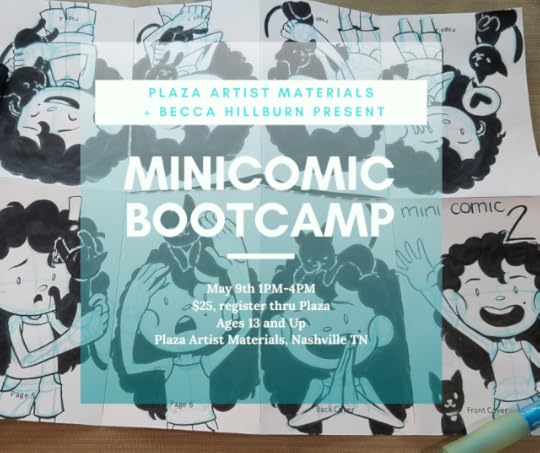
Comic Boot Camp
May 9th, 1-4PM
PlaZa Artist Materials
Nashville, TN
$25 admission, supplies provided
Register through email-nashvilleclasses@plazaart.com
All ages welcome, but children under 13 need to register with a guardian
My last comic class in Nashville! In this three hour workshop, we'll talk about comic art, process, and you'll get your hands on commonly used comic tools. Together we'll make an eight page minicomic. Although we provide the materials, feel free to bring your own favorites! Snacks are provided, but you're welcome to bring your own.
Sign up here to find out about future classes and workshops!

Please register for classes early to ensure your place in class. Since I'm responsible for printed templates and resources, and provide most class materials, it's helpful to have a good idea of how many students are attending, so I can prepare ahead of time. If you’d like one on one critique or advice, please make sure you bring examples of your work (physical is best) and show up a bit early so I have time to help you!
For Plaza classes: If you would like to register someone under the age of 13, please register for the class with them. Kids are welcome, but only if accompanied by a parent or guardian.
All other classes in this post are for teens and kids.
Classes are for February-May 2020 and are subject to change. Please register in advance to secure your seat and to allow me to properly prepare in advance. If you have any questions or need more information, feel free to email me!

Watercolor for Comics and Illustration
February 8th- 1PM-4PM
PlaZa Artist Materials
Nashville, TN
$25 admission, supplies provided
Register through email-nashvilleclasses@plazaart.com or call 615-254-3368
All ages welcome, but children under 13 need to register with a guardian
Have you always wanted to learn how to use watercolor for illustration and comic art? Or maybe you know someone who loves traditional media art and would be interested in expanding their experience?I’m teaching a class on watercolor for comic and illustration art through Plaza Artist Materials in Nashville, TN, on Saturday, February 8th! It's called How to Use Watercolors on the schedule. Even if you know absolutely nothing about watercolor, you’re welcome to sign up and take this class! We’ll be providing everything you need for three hours of watercolor fun including paints, papers, and snacks! If you want to learn how to use your own watercolor supplies, bring them along! The class is from 1-4PM, and I welcome artists of all ages and experience levels to come learn the secrets to watercolor for comics.I’ll provide you with a list of recommended supplies, if you want to start shopping after the class is over, and once you get home, you can explore years of watercolor tutorials and reviews to help bolster your studies on Nattosoup Studio Art and Process Blog and my Youtube channel. And of course, you’re welcome to reach out to me via email!

Learn to Draw Anything
Standalone Pop Up Class
February 19th, 4-5PM
The Little Art House
Nashville, TN
Register through The Little Art House
Price TBA
Want to learn how to draw, or level up your art? I'll teach you the magic secret that they don't teach you in public school art classes! Everything in our 4D world is made up of pretty basic 3D shapes that can be drawn on 2D paper. I'll show you how to break complex objects down into those basic shapes, and teach you how to draw them. When you leave this class, you'll see the world in a whole new way!

Manga Madness
Standalone Pop Up Class
February 26th, 4-5PM
The Little Art House
Nashville, TN
Register through The Little Art House
Price TBA
Love anime and manga? Trying to find your own art style? In this standalone class, I'll show you how to draw your own characters and teach you the basics of constructing faces and facial proportions. Once you have the basics down, it's easy to tweak it to suit your taste and drawing style!

From Stick to Figure
Standalone Pop Up Class
March 4th, 4-5PM
The Little Art House
Nashville, TN
Register through The Little Art House
Price TBA
Want to learn how to draw people? Interested in designing your own original characters? This class will show you how to go from stick figure to character design! In this hour long class, we're going to focus on capturing gesture and form, as well as answering your figure drawing questions!

Comic Illustration: Designing Original Characters
March 7th & 8th, 10AM-4PM
Watkins Community Education
Nashville, TN
Register through Watkins Community Education
A weekend crash course on drawing and designing characters for comics and illustration! On Saturday, we're going to focus on figure drawing and understanding the human form using constructive anatomy- great for posing characters! On Sunday we're turning our focus to facial construction, designing faces, and finding your style!
This weekend drawing camp is perfect for young artists who need extra guidance or encouragement to get started on their projects. Classes are held at Watkins College of Art- the perfect setting to inspire.

Manga Madness
March 12th- 4:30-5:30
Bordeaux Branch Fandom Fest
Nashville, TN
Free!
This class is more than just manga! Part of Nashville Public Library's Fandam Fest, I'll show you how to construct and draw your own characters in this free hour long workshop! Bring your sketchbooks and be prepared to draw!

Creating Comics
Watkins 4 Week Comic Class
Mondays, March 23rd- April 13th 6:00PM-8:00PM
Watkins Community Education
Nashville, TN
Register through Watkins Community Education
Know a young artist who'd like to start their comics journey? Or maybe someone who needs a bit of support and encouragement to get started? This four week comic class, hosted by Watkins Community Education, will walk aspiring comic artists through the basics, giving them the foundation they need to get started. Get help with the comic process and hands on experience with the tools of the comic trade!

From Stick to Figure
March 28th, 1-4PM
PlaZa Artist Materials
Nashville, TN
$25 admission, supplies provided
Register through email-nashvilleclasses@plazaart.com or call 615-254-3368
All ages welcome, but children under 13 need to register with a guardian
Learn how to go from stick figure to comic character in this three hour drawing workshop hosted by Plaza Artist Materials. This is a deeper dive into figure drawing and construction. Feel free to bring snacks and your favorite sketching materials!

Mixed Media Marker
April 11th, 1-4PM
PlaZa Artist Materials
Nashville, TN
$25 admission, supplies provided
Register through email-nashvilleclasses@plazaart.com or call 615-254-3368
All ages welcome, but children under 13 need to register with a guardian
My last marker class in Nashville, so sign up while seats are available! In Mixed Media marker, get hands on experience with alcohol markers like Copics and Prismacolor, and learn new techniques to really make your marker art pop! From watercolor to color pencils to chiyogami paper, take your marker illustrations to the next level with creative solutions.

Comic Boot Camp
May 9th, 1-4PM
PlaZa Artist Materials
Nashville, TN
$25 admission, supplies provided
Register through email-nashvilleclasses@plazaart.com
All ages welcome, but children under 13 need to register with a guardian
My last comic class in Nashville! In this three hour workshop, we'll talk about comic art, process, and you'll get your hands on commonly used comic tools. Together we'll make an eight page minicomic. Although we provide the materials, feel free to bring your own favorites! Snacks are provided, but you're welcome to bring your own.
Sign up here to find out about future classes and workshops!

Published on February 03, 2020 13:00
January 30, 2020
How Do You Know So Much About Markers?
A couple very excellent questions popped up in The Paintbox recently:
How Do You Research Markers?
How Do You Know So Much About Markers?
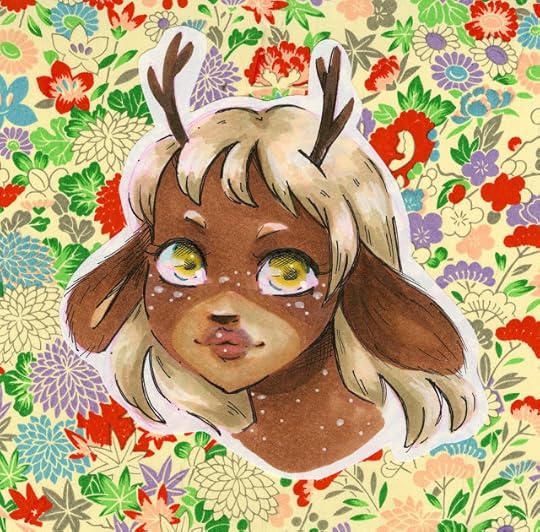 Copic and Blick Studio Brush markers on sketchbook paper, chiyogami paper background
Copic and Blick Studio Brush markers on sketchbook paper, chiyogami paper background
There's a few things yall should know about me, to understand how I pursue reviews.
I am impulsive as heck, especially when it comes to alcohol markers and watercolor. I've had to actively work to slow myself down from buying things over the years, and to work through my backlog. I've purchased A LOT of markers, and tend to personally go for things that are interesting and innovative (Chameleon Color Tones, Spectrum Noir Tri Blend), but my most requested reviews are for really cheap markers like those sold on Wish, Amazon, or even Walmart. I try to satisfy both needs, but at this point, refuse to pay to review bullet tipped markers (I know I hate them, I'm biased) unless there's something really unusual.
These days, to slow myself down but still offer the option of reviews, I sometimes crowdfund art supply reviews on my Ko-Fi, allowing viewers to decide with their dollars which products they're interested in seeing reviewed. This has helped me set boundaries, allowed me to save some money, and has slowed me down (in a good way) a lot!
When I do review a product, I do a lot of research between the Unbox and Swatch and the Fieldtest videos. For the Unbox and Swatch, I want to go in as a fresh slate and form my own opinions, for the Fieldtest, I want to be knowledgeable about the product and able to answer possible questions. I also use the Fieldtest as an opportunity to help those who own the product learn how to use it.
Knowledge builds on knowledge. What I learn in other marker reviews can often be applied to newer reviews.
 Copic marker on Fluid EZ block paper, watercolor
Copic marker on Fluid EZ block paper, watercolor
So how do I know so much about markers?
Years of use, years of teaching. I teach marker classes with Nashville's Plaza art- to teach markers, I have to have a lot of experience, but I also had to do a lot of testing. I make my own materials for class use, including demos. At one point, I wanted Copic certification, and studied a lot about alcohol markers, but Copic never came to Nashville with their cert classes.
Internet searches and digging
Company's product page and what they say about the productReviews, particularly reviews on the product pageVideos put out by the company on manufacturing/usageDigging up info about the parent company/acquisitionsWatch other artists' reviews like Frugal CrafterWatch CHA yearly videos that introduce new productsSubscribed so several brands Youtube pages/Twitters/Instagram accounts to help me keep up with releases
Comparison to other markers I've reviewed in the past
Body typeBrush TypeIs this a new make of an old marker (like Spectrum Noir)Is this a rebrand of another marker (like ColorIt, Milo, Shuttle Art)Marker solvent's smellReactivity to popular/common marker solventsKnowledge gathered from reviewing other types of markers, such as Winsor and Newton Pigment Markers/waterbased markers/watercolor markers
Frequently browse sites like:
AmazonAli ExpressWishMarker Universe (formerly Copic's distributor)Marker SupplyBlicklooking for new products
Frequently browse stores like:
PlazaJerry's ArtaramaMichaels
Pay attention to trends:
Body typesNib typesif the marker is popular, will they offer:RefillsReplacement nibsWho is this marketed to? (Spectrum Noir focuses heavily on the crafter market, for example, and may lean towards products that I personally would not find useful)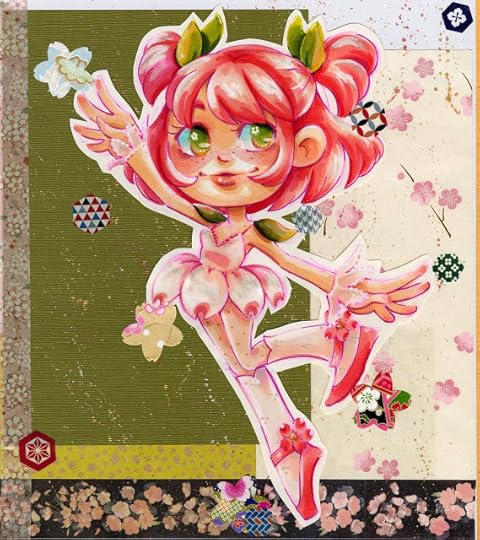 Copic Markers, Blick Studio Brush markers on sketchbook paper, chiyogami, mounted to sign board
Copic Markers, Blick Studio Brush markers on sketchbook paper, chiyogami, mounted to sign board
Went to Japan, twice, on the hunt for interesting art supplies. Went to San Francisco four times for the same. Basically, any time I'm in a new area, I hit their art stores- regional and local. If something is really interesting to me, I have no problem using Google Translate in the store to figure out if it's useful.
Revisit old reviews, particularly written ones, for important information I may have forgotten. This blog contains five years- literally dozens- of marker reviews in the Alcohol Marker subsection. The channel has at least a dozen more, with important info in the video descriptions. I've gathered a lot of hands-on experience over the years that I can put to use when reviewing new markers.
Most of my friends are artists, and some of them are just as nerdy about art supplies as I am. Kabocha introduced me to MSDS- info documents that share some, but not all, information about the makeup of the products, including known toxicity issues and carcinogens and some chemical information like the solvent. Blick has MSDS information for most of their products. Alli and Heidi have allowed me to borrow their art supplies to review and compare for the channel, and Kabocha has sent me interesting art supplies to try out over the years. My group of friends rehomes art supplies frequently, and we used to frequently send one another samples, which allows us to cheaply expand our knowledge base. When I know a friend has more knowledge than I do, I'm happy to turn to them for help.
Attend events centered around art supply manufacturing and new products. Tried to join NAMTA a few years ago as an artist, because I'm genuinely interested in how art supplies are made. This is an ongoing goal- right now they don't offer an artist rate that's affordable, and have difficulty understanding why artists might be interested in how the sausage is made. Attend Hands on Creativity yearly at Plaza and talk directly to art supply reps and manufacturers, attend the free workshops where they talk about how their products are made. I'd love to attend Art of the Carolinas at some point.
I also contact art supply companies like Prismacolor and Winsor & Newton via email, contact form, and Twitter- my results from this are very hit or miss, many of the big companies are awful at responding or their reps don't know the product. I would love it if companies were more reliable about answering artist questions- if they could be a trusted source for information. Winsor and Newton has gotten better about this, but huge companies like Newell-Rubbermade (who own Prismacolor) don't seem interested in responding to customer questions.
Recent Marker Fieldtests:
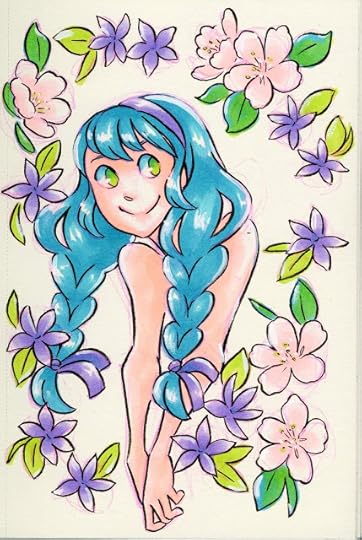 Master's Touch Markers in Master's Touch Mixed Media sketchbook
Master's Touch Markers in Master's Touch Mixed Media sketchbook
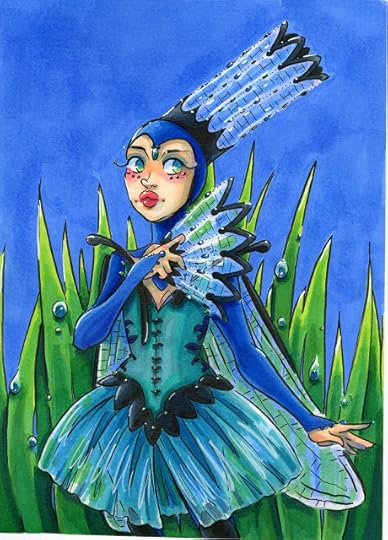 Arrtx Markers on Strathmore Plate Bristol
Arrtx Markers on Strathmore Plate Bristol
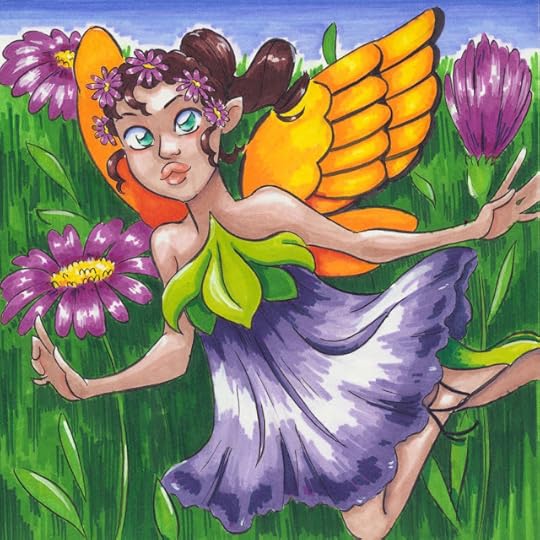 Sharpie markers on Strathmore Zentangle Bristol
Sharpie markers on Strathmore Zentangle Bristol
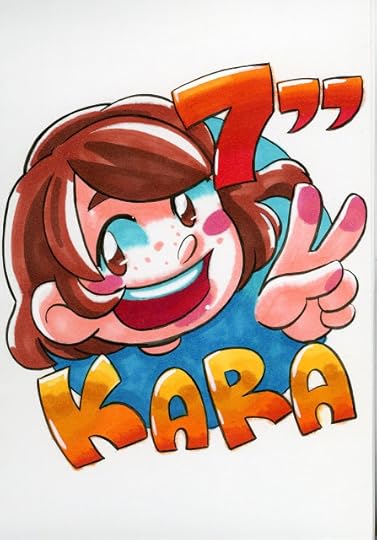 Milo Art Markers on Strathmore Mixed Media Paper
Milo Art Markers on Strathmore Mixed Media Paper
 Milo Pro Markers on Strathmore Mixed Media Paper
Milo Pro Markers on Strathmore Mixed Media Paper
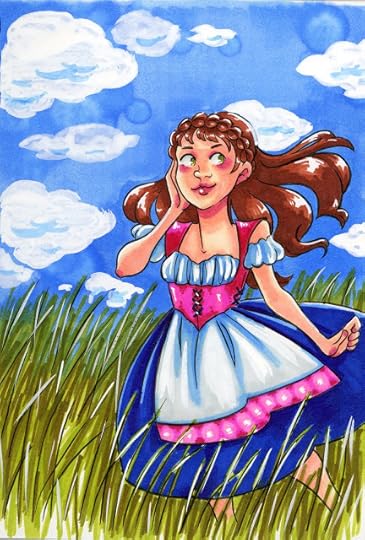 Shuttle Art markers on Strathmore Mixed Media Paper
Shuttle Art markers on Strathmore Mixed Media Paper
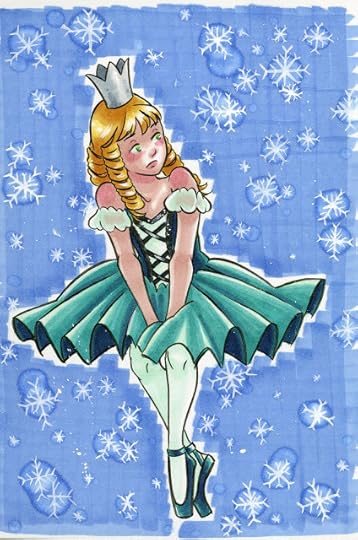 ColorIt markers on Strathmore Mixed Media Paper
ColorIt markers on Strathmore Mixed Media Paper
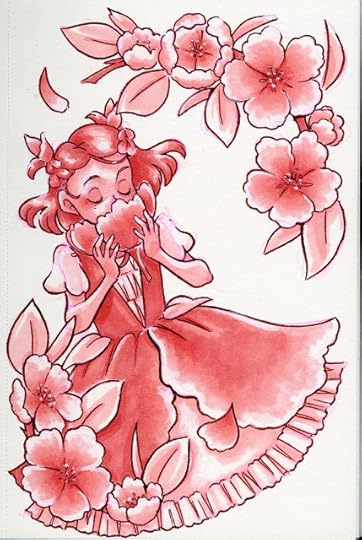 Spectrum Noir TriBlend- Coral Blend Marker in Master's Touch Mixed Media SketchbookAs yall can imagine, handling so many different types of markers gives me a lot of hands-on experience and a large base for comparison.
Spectrum Noir TriBlend- Coral Blend Marker in Master's Touch Mixed Media SketchbookAs yall can imagine, handling so many different types of markers gives me a lot of hands-on experience and a large base for comparison.
How Do You Research Markers?
How Do You Know So Much About Markers?
 Copic and Blick Studio Brush markers on sketchbook paper, chiyogami paper background
Copic and Blick Studio Brush markers on sketchbook paper, chiyogami paper backgroundThere's a few things yall should know about me, to understand how I pursue reviews.
I am impulsive as heck, especially when it comes to alcohol markers and watercolor. I've had to actively work to slow myself down from buying things over the years, and to work through my backlog. I've purchased A LOT of markers, and tend to personally go for things that are interesting and innovative (Chameleon Color Tones, Spectrum Noir Tri Blend), but my most requested reviews are for really cheap markers like those sold on Wish, Amazon, or even Walmart. I try to satisfy both needs, but at this point, refuse to pay to review bullet tipped markers (I know I hate them, I'm biased) unless there's something really unusual.
These days, to slow myself down but still offer the option of reviews, I sometimes crowdfund art supply reviews on my Ko-Fi, allowing viewers to decide with their dollars which products they're interested in seeing reviewed. This has helped me set boundaries, allowed me to save some money, and has slowed me down (in a good way) a lot!
When I do review a product, I do a lot of research between the Unbox and Swatch and the Fieldtest videos. For the Unbox and Swatch, I want to go in as a fresh slate and form my own opinions, for the Fieldtest, I want to be knowledgeable about the product and able to answer possible questions. I also use the Fieldtest as an opportunity to help those who own the product learn how to use it.
Knowledge builds on knowledge. What I learn in other marker reviews can often be applied to newer reviews.
 Copic marker on Fluid EZ block paper, watercolor
Copic marker on Fluid EZ block paper, watercolorSo how do I know so much about markers?
Years of use, years of teaching. I teach marker classes with Nashville's Plaza art- to teach markers, I have to have a lot of experience, but I also had to do a lot of testing. I make my own materials for class use, including demos. At one point, I wanted Copic certification, and studied a lot about alcohol markers, but Copic never came to Nashville with their cert classes.
Internet searches and digging
Company's product page and what they say about the productReviews, particularly reviews on the product pageVideos put out by the company on manufacturing/usageDigging up info about the parent company/acquisitionsWatch other artists' reviews like Frugal CrafterWatch CHA yearly videos that introduce new productsSubscribed so several brands Youtube pages/Twitters/Instagram accounts to help me keep up with releases
Comparison to other markers I've reviewed in the past
Body typeBrush TypeIs this a new make of an old marker (like Spectrum Noir)Is this a rebrand of another marker (like ColorIt, Milo, Shuttle Art)Marker solvent's smellReactivity to popular/common marker solventsKnowledge gathered from reviewing other types of markers, such as Winsor and Newton Pigment Markers/waterbased markers/watercolor markers
Frequently browse sites like:
AmazonAli ExpressWishMarker Universe (formerly Copic's distributor)Marker SupplyBlicklooking for new products
Frequently browse stores like:
PlazaJerry's ArtaramaMichaels
Pay attention to trends:
Body typesNib typesif the marker is popular, will they offer:RefillsReplacement nibsWho is this marketed to? (Spectrum Noir focuses heavily on the crafter market, for example, and may lean towards products that I personally would not find useful)
 Copic Markers, Blick Studio Brush markers on sketchbook paper, chiyogami, mounted to sign board
Copic Markers, Blick Studio Brush markers on sketchbook paper, chiyogami, mounted to sign boardWent to Japan, twice, on the hunt for interesting art supplies. Went to San Francisco four times for the same. Basically, any time I'm in a new area, I hit their art stores- regional and local. If something is really interesting to me, I have no problem using Google Translate in the store to figure out if it's useful.
Revisit old reviews, particularly written ones, for important information I may have forgotten. This blog contains five years- literally dozens- of marker reviews in the Alcohol Marker subsection. The channel has at least a dozen more, with important info in the video descriptions. I've gathered a lot of hands-on experience over the years that I can put to use when reviewing new markers.
Most of my friends are artists, and some of them are just as nerdy about art supplies as I am. Kabocha introduced me to MSDS- info documents that share some, but not all, information about the makeup of the products, including known toxicity issues and carcinogens and some chemical information like the solvent. Blick has MSDS information for most of their products. Alli and Heidi have allowed me to borrow their art supplies to review and compare for the channel, and Kabocha has sent me interesting art supplies to try out over the years. My group of friends rehomes art supplies frequently, and we used to frequently send one another samples, which allows us to cheaply expand our knowledge base. When I know a friend has more knowledge than I do, I'm happy to turn to them for help.
Attend events centered around art supply manufacturing and new products. Tried to join NAMTA a few years ago as an artist, because I'm genuinely interested in how art supplies are made. This is an ongoing goal- right now they don't offer an artist rate that's affordable, and have difficulty understanding why artists might be interested in how the sausage is made. Attend Hands on Creativity yearly at Plaza and talk directly to art supply reps and manufacturers, attend the free workshops where they talk about how their products are made. I'd love to attend Art of the Carolinas at some point.
I also contact art supply companies like Prismacolor and Winsor & Newton via email, contact form, and Twitter- my results from this are very hit or miss, many of the big companies are awful at responding or their reps don't know the product. I would love it if companies were more reliable about answering artist questions- if they could be a trusted source for information. Winsor and Newton has gotten better about this, but huge companies like Newell-Rubbermade (who own Prismacolor) don't seem interested in responding to customer questions.
Recent Marker Fieldtests:
 Master's Touch Markers in Master's Touch Mixed Media sketchbook
Master's Touch Markers in Master's Touch Mixed Media sketchbook
 Arrtx Markers on Strathmore Plate Bristol
Arrtx Markers on Strathmore Plate Bristol Sharpie markers on Strathmore Zentangle Bristol
Sharpie markers on Strathmore Zentangle Bristol Milo Art Markers on Strathmore Mixed Media Paper
Milo Art Markers on Strathmore Mixed Media Paper Milo Pro Markers on Strathmore Mixed Media Paper
Milo Pro Markers on Strathmore Mixed Media Paper Shuttle Art markers on Strathmore Mixed Media Paper
Shuttle Art markers on Strathmore Mixed Media Paper ColorIt markers on Strathmore Mixed Media Paper
ColorIt markers on Strathmore Mixed Media Paper Spectrum Noir TriBlend- Coral Blend Marker in Master's Touch Mixed Media SketchbookAs yall can imagine, handling so many different types of markers gives me a lot of hands-on experience and a large base for comparison.
Spectrum Noir TriBlend- Coral Blend Marker in Master's Touch Mixed Media SketchbookAs yall can imagine, handling so many different types of markers gives me a lot of hands-on experience and a large base for comparison.
Published on January 30, 2020 13:00
January 27, 2020
Colored Lead with Watercolor-Easy Lineless Watercolor Illustrations
One of my favorite 'tricks' for alcohol markers or for watercolor is to create a lineless artstyle using colored leads. One of my favorite leads for this is the Pilot Color Eno Pink lead- perfect for florals and faces!
Today I want to walk yall through my process for using colored lead with watercolor. The materials vary, but the process remains the same on almost any substrate, regardless of whether I'm using alcohol markers or watercolors. Both watercolor and alcohol marker dissolve the pink lead a bit, and unlike graphite, colored lead won't necessarily ruin your marker brush tips.
If you're new to colored leads, I recommend you buy this set- it includes all 8 colors preloaded into handy mechanical pencils. I find it really handy to have color coded, designated pencils for my leads. If you have your own preferred mechanical pencils, you can get just the 8 pack of leads.
Demonstration 1
Materials:Pilot Color Eno ((Pink)Fluid 100 Watercolor PaperQor Mini Palette
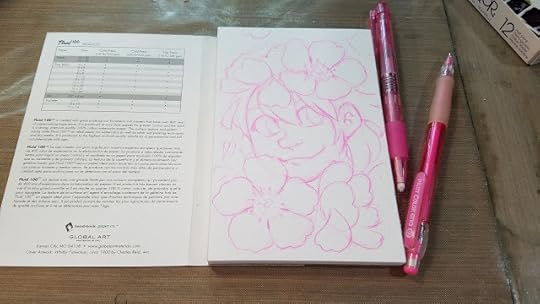
Step 1: Sketch your sketch using the colored lead of your choice onto your paper. Remove construction and excess lines with an eraser.
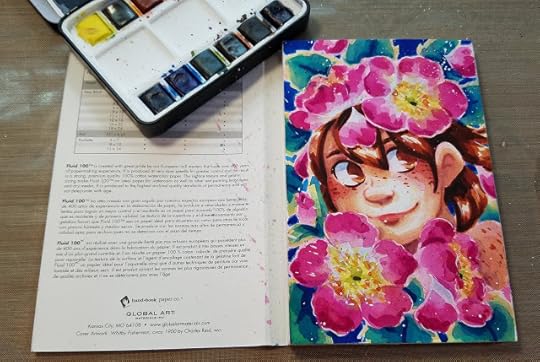
Step 2: Paint as you normally would!
Check out the Timelapse:
Demonstration 2:Materials:Rice Paper FanMozArt Komorebi PalettePilot Color Eno (Pink)
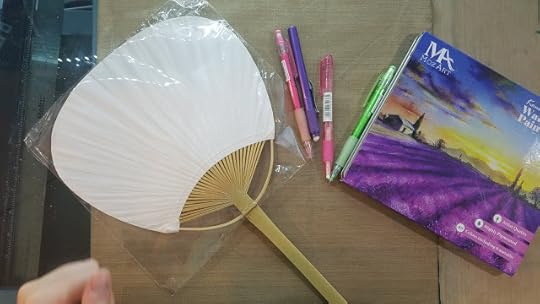
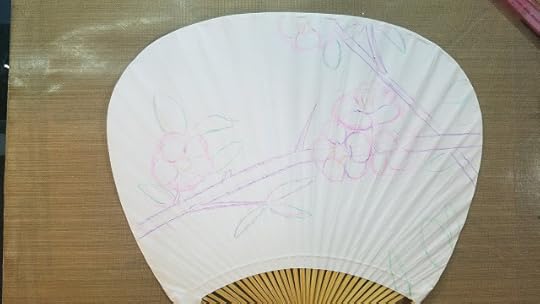
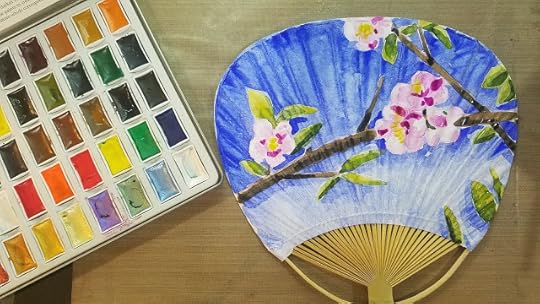
You're not limited to just pink though! Match your leads with your subject matter, like in the below example with morning glories.
Demonstration 3:
Materials:
Rice Paper Fan
Pilot Color Eno- Purple, Pink, Blue
MozArt Komorebi
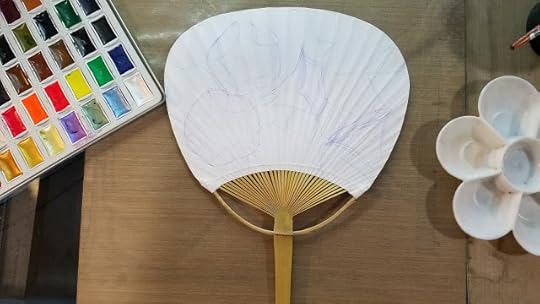
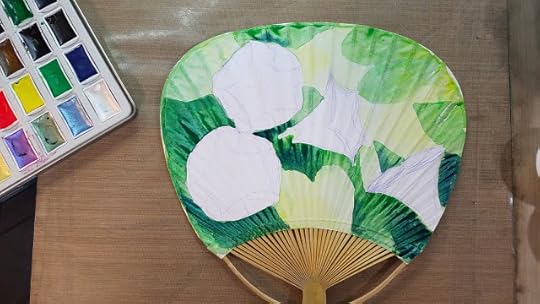
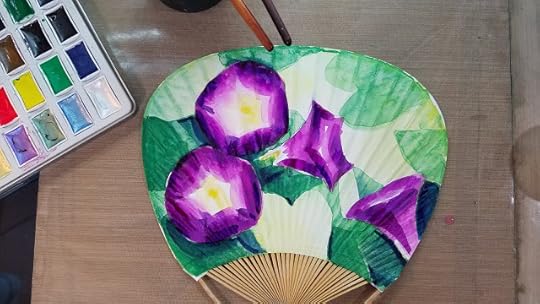
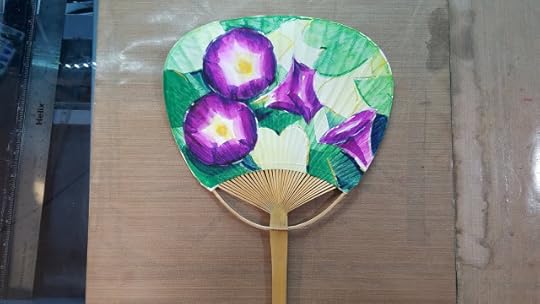
Demonstration 4:
Materials:
Pilot Color Eno Lead- Purple, Blue, Green
Rice Paper Fan
MozArt Komorebi
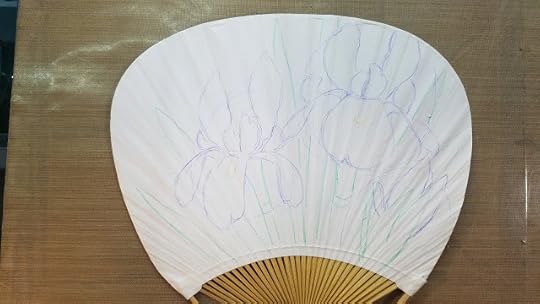
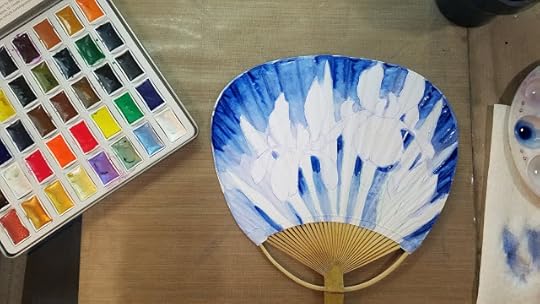
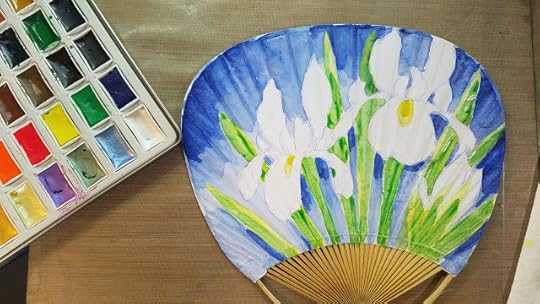
Demonstration 5:
Materials:
Grumbacher Watercolor Paper Sample
Pilot Color Eno- Pink, Green
Da Vinci Mixing Set
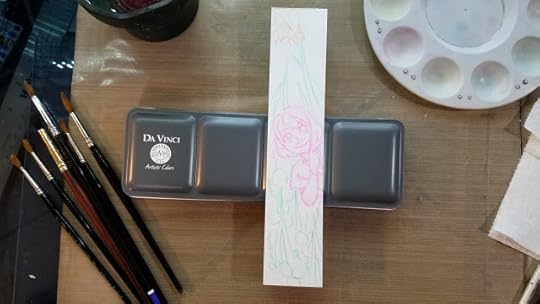
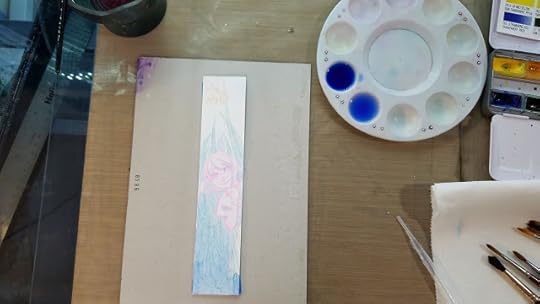
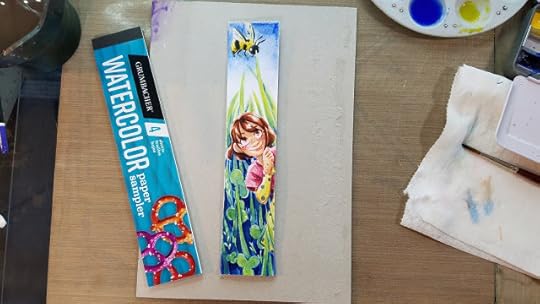
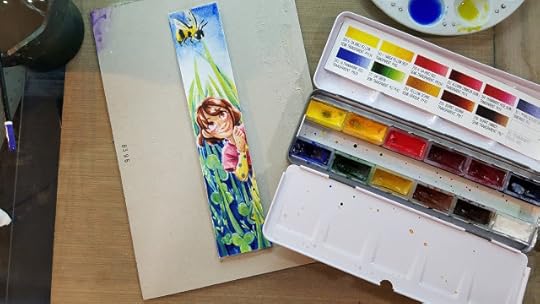
Check out the Tutorial:
Finished Works:
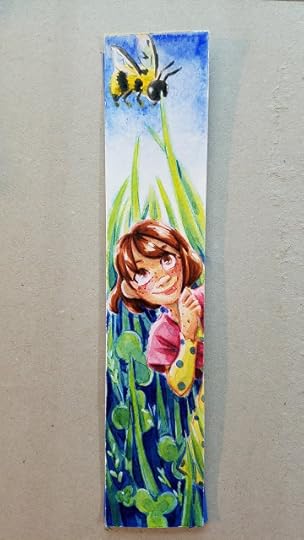 Grumbacher Watercolor Paper Sample, Color Eno Pink and Green, Da Vinci Mixing Palette
Grumbacher Watercolor Paper Sample, Color Eno Pink and Green, Da Vinci Mixing Palette
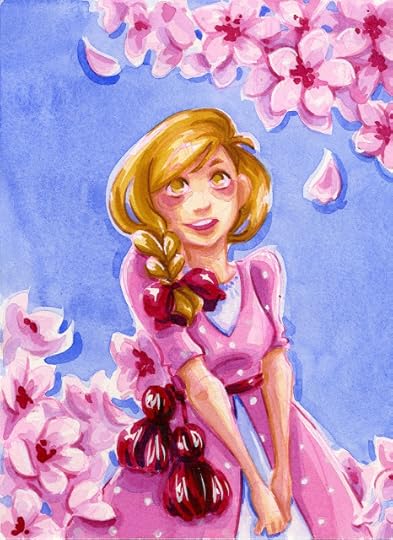 Fluid 100, Color Eno Pink, MozArt Komorebi
Fluid 100, Color Eno Pink, MozArt Komorebi
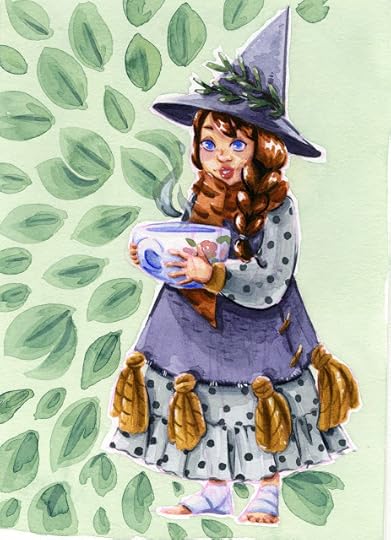 Strathmore Watercolor Paper, Color Eno Pink, Qor Mini Palette
Strathmore Watercolor Paper, Color Eno Pink, Qor Mini Palette
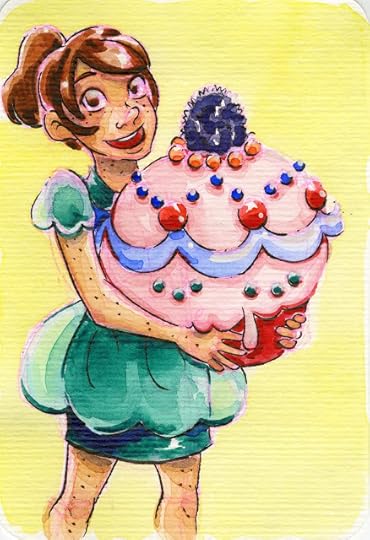 Hahnemule Postcard, Color Eno Pink, Turner watercolors
Hahnemule Postcard, Color Eno Pink, Turner watercolors
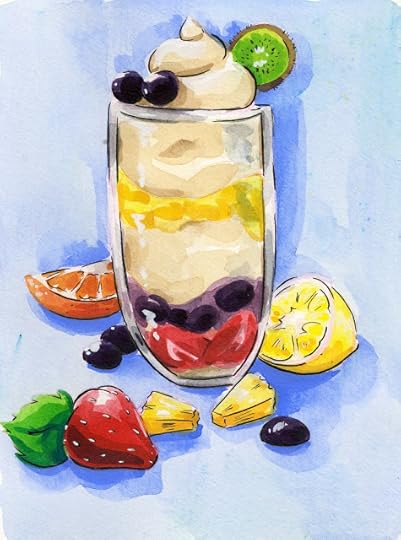 Fluid EZ Block, Color Eno Pink, Derwent Inktense palette
Fluid EZ Block, Color Eno Pink, Derwent Inktense palette

Today I want to walk yall through my process for using colored lead with watercolor. The materials vary, but the process remains the same on almost any substrate, regardless of whether I'm using alcohol markers or watercolors. Both watercolor and alcohol marker dissolve the pink lead a bit, and unlike graphite, colored lead won't necessarily ruin your marker brush tips.
If you're new to colored leads, I recommend you buy this set- it includes all 8 colors preloaded into handy mechanical pencils. I find it really handy to have color coded, designated pencils for my leads. If you have your own preferred mechanical pencils, you can get just the 8 pack of leads.
Demonstration 1
Materials:Pilot Color Eno ((Pink)Fluid 100 Watercolor PaperQor Mini Palette

Step 1: Sketch your sketch using the colored lead of your choice onto your paper. Remove construction and excess lines with an eraser.

Step 2: Paint as you normally would!
Check out the Timelapse:
Demonstration 2:Materials:Rice Paper FanMozArt Komorebi PalettePilot Color Eno (Pink)



You're not limited to just pink though! Match your leads with your subject matter, like in the below example with morning glories.
Demonstration 3:
Materials:
Rice Paper Fan
Pilot Color Eno- Purple, Pink, Blue
MozArt Komorebi




Demonstration 4:
Materials:
Pilot Color Eno Lead- Purple, Blue, Green
Rice Paper Fan
MozArt Komorebi



Demonstration 5:
Materials:
Grumbacher Watercolor Paper Sample
Pilot Color Eno- Pink, Green
Da Vinci Mixing Set




Check out the Tutorial:
Finished Works:
 Grumbacher Watercolor Paper Sample, Color Eno Pink and Green, Da Vinci Mixing Palette
Grumbacher Watercolor Paper Sample, Color Eno Pink and Green, Da Vinci Mixing Palette Fluid 100, Color Eno Pink, MozArt Komorebi
Fluid 100, Color Eno Pink, MozArt Komorebi Strathmore Watercolor Paper, Color Eno Pink, Qor Mini Palette
Strathmore Watercolor Paper, Color Eno Pink, Qor Mini Palette Hahnemule Postcard, Color Eno Pink, Turner watercolors
Hahnemule Postcard, Color Eno Pink, Turner watercolors Fluid EZ Block, Color Eno Pink, Derwent Inktense palette
Fluid EZ Block, Color Eno Pink, Derwent Inktense palette
Published on January 27, 2020 13:00
January 23, 2020
2019 Top Ten Favorites
It's a bit belated, but after much thought, I compiled a list of my favorite art products and services for 2019! Some are new and some are just new to me, but I think there's plenty for yall to enjoy.
Want to help support more reviews?
Sponsor a review by buying something from my wishlist
Sponsor a review by tipping on Ko-Fi
Help sponsor reviews and tutorials by subscribing on Patreon!
Most of the products on this list have already been reviewed or have tutorials that utilize them. Artnerds received these videos awhile back, and they're currently being queued to go live. Join the Artnerd community on Patreon to gain early access to video reviews and tutorials!
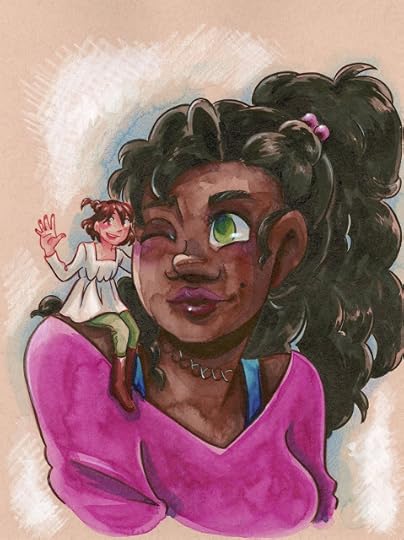 This piece represents several of the products on this list! Strathmore Toned Tan Mixed Media Paper, inked with Pitt Pens, colored with Albrecht Durer Watercolor Markers, Pitt Pens, and Polychromos Pencils.
This piece represents several of the products on this list! Strathmore Toned Tan Mixed Media Paper, inked with Pitt Pens, colored with Albrecht Durer Watercolor Markers, Pitt Pens, and Polychromos Pencils.
Strathmore Colored Mixed Media Papers
Toned Tan
Black
Working on a colored base makes illustrations in opaque media pop off the paper! I even love using alcohol markers and gouache on the Strathmore Toned Tan mixed media paper.
Strathmore's colored drawing papers have been around for awhile, but the mixed media equivalents are very new to Strathmore's paper lineup. The black mixed media paper is the newest addition, and is great with color pencils like Polychromos.
Faber-Castell's Albrecht Durer watercolor markers
There're a lot of watercolor markers on the market, but most are dye based. Faber-Castell's Albrecht Durer watercolor markers are water soluble India ink, so not only are they going to move easily with water, but your art will be lightfast for years to come.
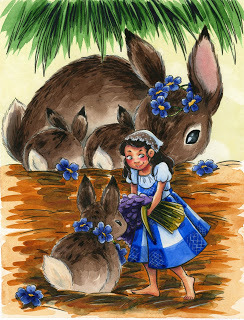
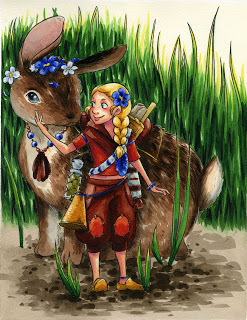 Watercolor on Stonehenge Aqua Hotpress and Stonehenge Aqua Coldpress
Watercolor on Stonehenge Aqua Hotpress and Stonehenge Aqua Coldpress
Stonehenge Legion Aqua watercolor papers
Coldpress
Hotpress
Black
The coldpress is a great workhorse cottonrag watercolor paper- sturdy and easy to use- not a fussy paper.
The hot press is the best hotpress I've ever used- smooth texture that's great for inking, but can take layers and layers of watercolor.
The black watercolor paper is just as nice as the hotpress and coldpress, and the dyes used in the manufacturing process seem to be quite stable. This paper is amazing for opaque watercolor techniques.
Zenpop Stationary Box
I've been disappointed by subscription art boxes in the past, but the Zenpop Stationery boxes really deliver! Cute stickers, notebooks, washi tapes, pencils, and more, delivered to your door each month!
I had a sub from January until May, and was thrilled with the contents of my five boxes.
Check out the unboxing streams on Youtube!
January 2019
February 2019
April 2019
May 2019
July 2019
Pentel Tradio Stylo Sketch Pen
I've reviewed a LOT of pens over the years- technical pens, brush pens, fountain pens, and the Tradio Stylo offers something unique! A plastic nibbed fountain pen that's fun for sketching and handlettering! Refillable with rich black ink, inkflow is consistent and immediate.
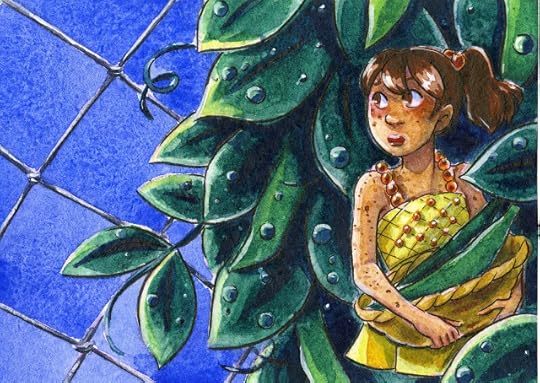 Watercolor on Shizen Hotpress watercolor paper
Watercolor on Shizen Hotpress watercolor paper
Shizen pre cut watercolor paper
Hot Press
Cold Press
Inexpensive cottonrag watercolor paper that's amazing for wet into wet techniques. A bit softer than standard mould-made paper and doesn't contain much sizing, so it takes getting used to. If you enjoy coldpress watercolor paper, I recommend going with the hot press for this one.
Molotov Chrome Marker
There's a lot of metallic markers out there, but this one really delivers the chrome! If you use it on a non porous surface, you'll get a shiny, mirror like effect! Even on porous surfaces, it still stands out well. Molotov Chrome markers utilize an alcohol solvent, so are not marker proof, but are indelible to water. Can be removed with rubbing alcohol.
 This piece represents several products! Kara and papers were adhered with a Tombow Permanent taperunner, Kara was inked with Tombow Fudenosuke brushpens.
This piece represents several products! Kara and papers were adhered with a Tombow Permanent taperunner, Kara was inked with Tombow Fudenosuke brushpens.
Tombow Adhesive Tape Runners
Not just for crafters, adhesive tape runners are great for artists and stationery fans! Your paper won't buckle, and Tombow's runners are available in both
Permanent
and
Removable
versions! I love using these for mixed media marker art!
Tombow Fudenosuke Color Brushpens (Discord Suggestion)
I love adding a pop of color to the inked linework in my illustrations, and Tombow Fudenosuke brushpens are alcohol marker safe! The smaller brushes on these pens are easy to use, and available in a rainbow of color!
Honorable Mentions:
Colored Pitt Pens (Twitter suggestion)
These colorful pens are lightfast, available in a huge array of colors, and available with a wide array of tip options, from fixed width felt tips to brushes and even soft chisel tips.
Stillman and Birn sketchbooks (Twitter suggestion)
These are super popular with artists! Available in several paper colors (I love the ivory!) and many paper types and finishes, Stillman and Birn has a sketchbook that's perfect for your favorite media! A bit pricy,
Other Awesome Art Supplies:
2018 Top Ten

Want to help support more reviews?
Sponsor a review by buying something from my wishlist
Sponsor a review by tipping on Ko-Fi
Help sponsor reviews and tutorials by subscribing on Patreon!
Most of the products on this list have already been reviewed or have tutorials that utilize them. Artnerds received these videos awhile back, and they're currently being queued to go live. Join the Artnerd community on Patreon to gain early access to video reviews and tutorials!
 This piece represents several of the products on this list! Strathmore Toned Tan Mixed Media Paper, inked with Pitt Pens, colored with Albrecht Durer Watercolor Markers, Pitt Pens, and Polychromos Pencils.
This piece represents several of the products on this list! Strathmore Toned Tan Mixed Media Paper, inked with Pitt Pens, colored with Albrecht Durer Watercolor Markers, Pitt Pens, and Polychromos Pencils.Strathmore Colored Mixed Media Papers
Toned Tan
Black
Working on a colored base makes illustrations in opaque media pop off the paper! I even love using alcohol markers and gouache on the Strathmore Toned Tan mixed media paper.
Strathmore's colored drawing papers have been around for awhile, but the mixed media equivalents are very new to Strathmore's paper lineup. The black mixed media paper is the newest addition, and is great with color pencils like Polychromos.
Faber-Castell's Albrecht Durer watercolor markers
There're a lot of watercolor markers on the market, but most are dye based. Faber-Castell's Albrecht Durer watercolor markers are water soluble India ink, so not only are they going to move easily with water, but your art will be lightfast for years to come.

 Watercolor on Stonehenge Aqua Hotpress and Stonehenge Aqua Coldpress
Watercolor on Stonehenge Aqua Hotpress and Stonehenge Aqua ColdpressStonehenge Legion Aqua watercolor papers
Coldpress
Hotpress
Black
The coldpress is a great workhorse cottonrag watercolor paper- sturdy and easy to use- not a fussy paper.
The hot press is the best hotpress I've ever used- smooth texture that's great for inking, but can take layers and layers of watercolor.
The black watercolor paper is just as nice as the hotpress and coldpress, and the dyes used in the manufacturing process seem to be quite stable. This paper is amazing for opaque watercolor techniques.
Zenpop Stationary Box
I've been disappointed by subscription art boxes in the past, but the Zenpop Stationery boxes really deliver! Cute stickers, notebooks, washi tapes, pencils, and more, delivered to your door each month!
I had a sub from January until May, and was thrilled with the contents of my five boxes.
Check out the unboxing streams on Youtube!
January 2019
February 2019
April 2019
May 2019
July 2019
Pentel Tradio Stylo Sketch Pen
I've reviewed a LOT of pens over the years- technical pens, brush pens, fountain pens, and the Tradio Stylo offers something unique! A plastic nibbed fountain pen that's fun for sketching and handlettering! Refillable with rich black ink, inkflow is consistent and immediate.
 Watercolor on Shizen Hotpress watercolor paper
Watercolor on Shizen Hotpress watercolor paperShizen pre cut watercolor paper
Hot Press
Cold Press
Inexpensive cottonrag watercolor paper that's amazing for wet into wet techniques. A bit softer than standard mould-made paper and doesn't contain much sizing, so it takes getting used to. If you enjoy coldpress watercolor paper, I recommend going with the hot press for this one.
Molotov Chrome Marker
There's a lot of metallic markers out there, but this one really delivers the chrome! If you use it on a non porous surface, you'll get a shiny, mirror like effect! Even on porous surfaces, it still stands out well. Molotov Chrome markers utilize an alcohol solvent, so are not marker proof, but are indelible to water. Can be removed with rubbing alcohol.
 This piece represents several products! Kara and papers were adhered with a Tombow Permanent taperunner, Kara was inked with Tombow Fudenosuke brushpens.
This piece represents several products! Kara and papers were adhered with a Tombow Permanent taperunner, Kara was inked with Tombow Fudenosuke brushpens.Tombow Adhesive Tape Runners
Not just for crafters, adhesive tape runners are great for artists and stationery fans! Your paper won't buckle, and Tombow's runners are available in both
Permanent
and
Removable
versions! I love using these for mixed media marker art!
Tombow Fudenosuke Color Brushpens (Discord Suggestion)
I love adding a pop of color to the inked linework in my illustrations, and Tombow Fudenosuke brushpens are alcohol marker safe! The smaller brushes on these pens are easy to use, and available in a rainbow of color!
Honorable Mentions:
Colored Pitt Pens (Twitter suggestion)
These colorful pens are lightfast, available in a huge array of colors, and available with a wide array of tip options, from fixed width felt tips to brushes and even soft chisel tips.
Stillman and Birn sketchbooks (Twitter suggestion)
These are super popular with artists! Available in several paper colors (I love the ivory!) and many paper types and finishes, Stillman and Birn has a sketchbook that's perfect for your favorite media! A bit pricy,
Other Awesome Art Supplies:
2018 Top Ten

Published on January 23, 2020 13:00
January 20, 2020
Developing Concepts and Illustrations
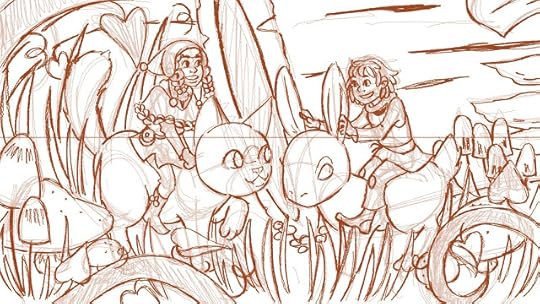
Most of my illustrations are developed in stages. This gives me a chance to refine the concept, improve the anatomy, and restage if necessary. I often work in a combination of traditional and digital media- digital gives me the flexibility to create as many layers as necessary to get the sketch right, and allows me to easily cut and resize problem areas.[=
Generally, I do my first sketch in my sketchbook. My brain just handles conceptualization better if I'm staring at paper rather than a screen. But once the thumbnail is drawn, I'm free to go digital. Sometimes I'll take a quick photo of the sketch with my phone and send it to my computer via Discord, sometimes I'll scan it when I'm putting together my monthly Patron sketchbooks- the transfer method doesn't really matter.
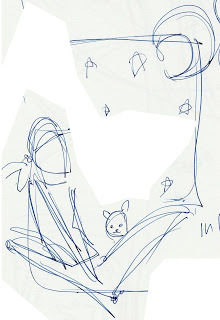
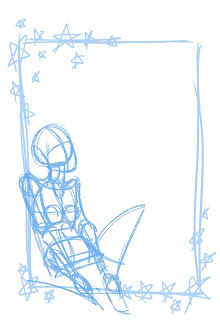
Image to the left- thumbnail sketch
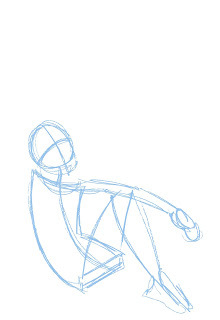
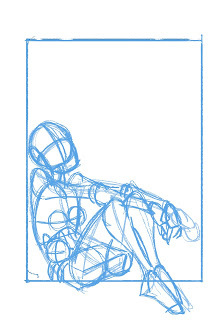
Refining the Pose and Sketching Anatomy
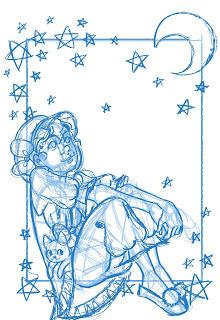
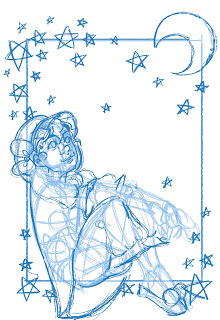
Sketching in Clothing and Tightening up Details
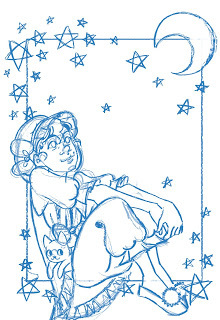
Finished Sketch, later printed onto watercolor paper
This isn't the end of the process! After this stage, I convert my sketch to grayscale and adjust the contrast so that it's just black and white, then use Duotone to convert it to non photo blue. I then print the bluelines onto the watercolor paper of my choice and either pencil or ink the illustration. The finished illustration will be in watercolor.
Lately, working this way has become a staple for my standalone illustrations. Working digitally to develop sketches gives me the flexibility to resize easily, or to rework problem areas, or to clone and copy pieces that work well and that I want to duplicate.
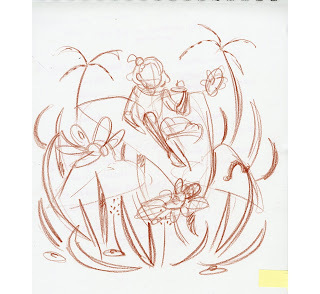 Thumbnail sketch
Thumbnail sketch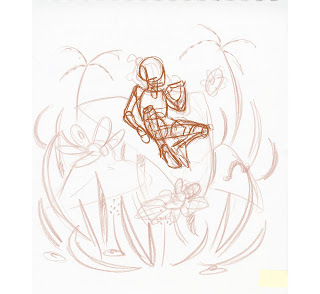 Refining the Figure
Refining the Figure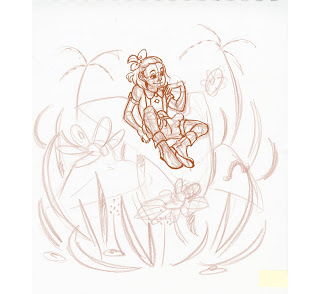 Tightening Up Character Details
Tightening Up Character Details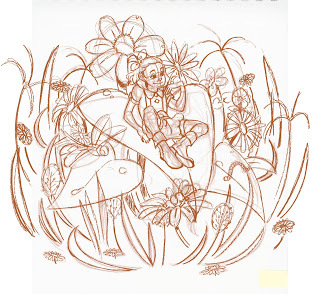 Adding Background Details
Adding Background DetailsWith the next example, I did a lot of alteration on the basic sketch- moving and resizing things- before committing.
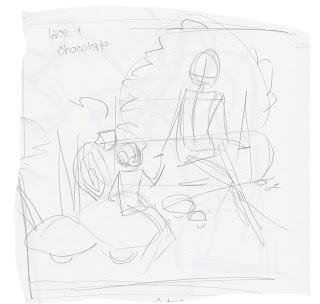 Thumbnail Sketch
Thumbnail Sketch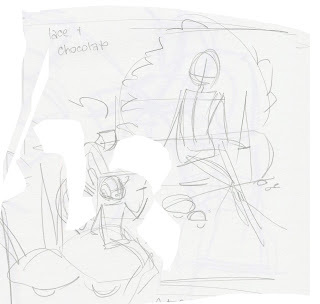
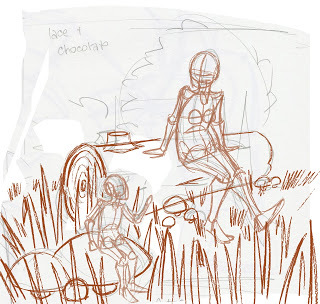
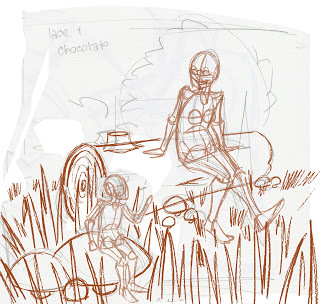
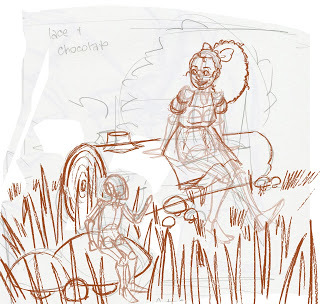
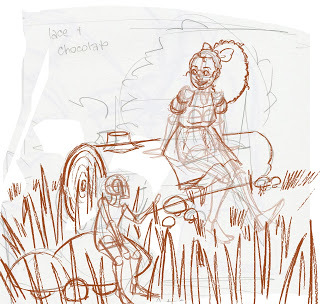
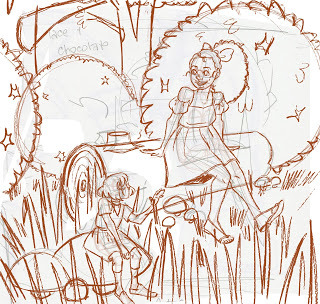
I wanted to play with scale a bit- making Naomi seem a bit smaller, and Kara a bit larger, and being able to manipulate things digitally helps with this!
I think this method is particularly helpful for people with tablets and iPads, particularly if they're busy and have a hard time carving out time for art. It's easier to put it down when necessary or to break the piece up into discrete steps, and you don't feel the pressure to nail it on the first shot.
If you wanna see how these pieces turn out, check out my Instagram!

Published on January 20, 2020 13:00
December 31, 2019
2020 New Year's Art Resolutions
2020 is going to bring a lot of changes in my life. 7" Kara Volume 2 is just about ready to launch on Kickstarter. Joseph and I plan on finally tying the knot in July, moving to Louisiana, and starting a family. I'd like to start an art tutoring business in my home parish- St Charles. So my resolutions and goals reflect this desire for a fresh start.
It's time for major change. And I'm ready for it.
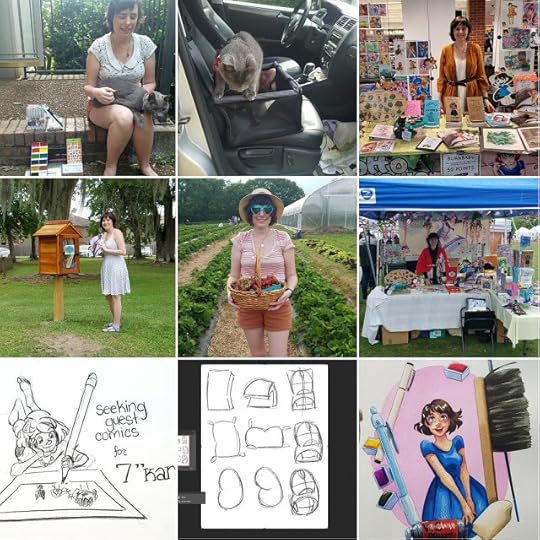 Best Nine Posts from Instagram, 2019
Best Nine Posts from Instagram, 2019
2020 New Year's Resolutions:
Kickstart Volume 2 of 7" KaraMarriage prepFinish up teaching engagements in Nashville in AprilResume 7" Kara webcomic updatesTake on way less free work- this blog, Youtube, The Paintbox- establish strong boundariesRedo professional online portfolioRedo resumeCull the art supply hoard even further, donating unwanted supplies to Goodwill and librariesMove to LouisianaSeek professional help for my ADHD and anxietyCreate more not-comic, standalone illustrations to share online

It's time for major change. And I'm ready for it.
 Best Nine Posts from Instagram, 2019
Best Nine Posts from Instagram, 20192020 New Year's Resolutions:
Kickstart Volume 2 of 7" KaraMarriage prepFinish up teaching engagements in Nashville in AprilResume 7" Kara webcomic updatesTake on way less free work- this blog, Youtube, The Paintbox- establish strong boundariesRedo professional online portfolioRedo resumeCull the art supply hoard even further, donating unwanted supplies to Goodwill and librariesMove to LouisianaSeek professional help for my ADHD and anxietyCreate more not-comic, standalone illustrations to share online

Published on December 31, 2019 13:00
December 13, 2019
How to Succeed in the Mid Winter Slump
It's winter, and everything I draw comes out looking blah. Any suggestions?
This question is a good one, because it's one a lot of artists seem to struggle with, even if they don't make the correlation between winter and art slumps.
First off, I want to point out this is a perfectly natural phenomena. Many people suffer from Seasonal Affective Disorder, many also suffer from a lack of sun based Vitamin D, and of course, cold weather makes it harder to get outside and get fresh air.
Many mammals hibernate all winter long. Mammals that don't hibernate often spend most of their time during the winter sleeping to conserve energy and stay warm. Humans have this same instinct to sleep and conserve energy during long winter months, even if we don't heed it.
Sometimes it helps to just accept that this is going to be an issue during the winter, and stop blaming yourself. You can use this winter downtime intentionally- use your free time to enjoy friends, family, or attend fun events and refill your mental tanks. You can also use your time to stock up on inspiration- like a chipmunk or squirrel creating a winter stash- and consume a lot of media that inspires and enriches your artistic life. This time can also be spent doing non-creative drawing tasks like drawing skill drills, studying figure drawing or perspective, or practicing a specific skill set like folds. This is also a great time to do style tests and refine elements of your style.
This is a wonderful time of year for reflection, and doing art redraws is a wonderful way to appreciate the progress you have made skill wise, even if you feel creatively tapped. Redraws are simple- pick an image from 10 years ago, 5 years ago, or even earlier in the year, and focus on using your new skills and techniques to redraw it. Fix up the character design, redo the pose, actually draw the hands- use this as a chance to focus on demonstrating your improvement, and worry less about being creative.
If you do have creative ideas, don't push yourself to make something finished and perfect- keeping things light, sketchy, and in a thumbnail stage is a good way to capture the idea without furthering your winter burnout. This is a great time to work on research or development for projects, since the production quality isn't important.

This question is a good one, because it's one a lot of artists seem to struggle with, even if they don't make the correlation between winter and art slumps.
First off, I want to point out this is a perfectly natural phenomena. Many people suffer from Seasonal Affective Disorder, many also suffer from a lack of sun based Vitamin D, and of course, cold weather makes it harder to get outside and get fresh air.
Many mammals hibernate all winter long. Mammals that don't hibernate often spend most of their time during the winter sleeping to conserve energy and stay warm. Humans have this same instinct to sleep and conserve energy during long winter months, even if we don't heed it.
Sometimes it helps to just accept that this is going to be an issue during the winter, and stop blaming yourself. You can use this winter downtime intentionally- use your free time to enjoy friends, family, or attend fun events and refill your mental tanks. You can also use your time to stock up on inspiration- like a chipmunk or squirrel creating a winter stash- and consume a lot of media that inspires and enriches your artistic life. This time can also be spent doing non-creative drawing tasks like drawing skill drills, studying figure drawing or perspective, or practicing a specific skill set like folds. This is also a great time to do style tests and refine elements of your style.
This is a wonderful time of year for reflection, and doing art redraws is a wonderful way to appreciate the progress you have made skill wise, even if you feel creatively tapped. Redraws are simple- pick an image from 10 years ago, 5 years ago, or even earlier in the year, and focus on using your new skills and techniques to redraw it. Fix up the character design, redo the pose, actually draw the hands- use this as a chance to focus on demonstrating your improvement, and worry less about being creative.
If you do have creative ideas, don't push yourself to make something finished and perfect- keeping things light, sketchy, and in a thumbnail stage is a good way to capture the idea without furthering your winter burnout. This is a great time to work on research or development for projects, since the production quality isn't important.

Published on December 13, 2019 13:00
December 12, 2019
Reader Question: What fundamentals do I need to know before I start drawing comics?
Recently, this excellent question came up in my Discord Server, The Paintbox:
What fundamentals do I need to know before I start drawing comics?
None. Anyone can start drawing comics, and I encourage everyone to give it a try at least once! If you can draw a smiley face and a stick figure, you can start drawing comics. Just look at XKCD. In fact, the sooner you start drawing comics, the sooner you can figure out where you need to improve, because this question is going to vary wildly based on the education and goals of the artist. What an artist needs to get started is going to vary from artist to artist and from project to project.
However, let's say you want to draw a manga inspired longform comic that's going to be very character heavy, feature a lot of diversity, and is reliant on worldbuilding for story information. For a project like this, I would recommend:
A strong understanding of various storytelling structures and ways to organize your storyAn understanding of volumetric drawingAn understanding of human anatomy and a system to replicate it consistentlyAn understanding of facial anatomyAn understanding of atmospheric perspective as well as linear perspectiveThoughts on what style you wish to use and what direction you want the art to takeAn end publication goal in mind- is it for print? for web?
And depending on whether you want to draw your comic using traditional materials, digital materials, or a combination of the two:
An understanding of the physical materials you're using and access to those materialsAn understanding of the programs and hardware you're going to use, and access to those materials
And of course, do you want your finished comic to be black and white, or in color?
Understand light, shadow, and how to render texturesA working grasp of basic color theory
That's quite an undertaking, isn't it? But don't be discouraged- you can often learn as you go, and there are a lot of free and affordable resources out there that will help you along your way!
I recommend you begin with a simple mini comic- aim for at least 8 pages. I talk about this more in my post In Defense of the Minicomic. Try to tell a complete, short story that would be understandable to people not familiar with your longform comic ideas. Working on this comic is going to give you a great idea of where you should begin focusing your improvement first- what areas are MOST important to you. I recommend you create this comic using the materials you want to use for your longform comic- this will give you an idea of how feasible those materials are for the project in mind.
Beginning a short comic project also gives you the opportunity to seek directed critique. It's difficult to give curated advice without a product to judge and assess- creating a comic will give your peers a baseline to provide suggestions and further resources.
So once you know your weaknesses, how do you go about addressing them?
This blog is an excellent resource, full of great tutorials and suggestions! I suggest you start with my Intro to Comic Craft hubpage. If you're a video tutorial sort of person, I have an Intro to Comic Craft series on Youtube, as well as a Making Comics and Zines series. And once you're ready for more, you can join us in The Paintbox!
There's also a wealth of great resources at your local library and on the internet!
What fundamentals do I need to know before I start drawing comics?
None. Anyone can start drawing comics, and I encourage everyone to give it a try at least once! If you can draw a smiley face and a stick figure, you can start drawing comics. Just look at XKCD. In fact, the sooner you start drawing comics, the sooner you can figure out where you need to improve, because this question is going to vary wildly based on the education and goals of the artist. What an artist needs to get started is going to vary from artist to artist and from project to project.
However, let's say you want to draw a manga inspired longform comic that's going to be very character heavy, feature a lot of diversity, and is reliant on worldbuilding for story information. For a project like this, I would recommend:
A strong understanding of various storytelling structures and ways to organize your storyAn understanding of volumetric drawingAn understanding of human anatomy and a system to replicate it consistentlyAn understanding of facial anatomyAn understanding of atmospheric perspective as well as linear perspectiveThoughts on what style you wish to use and what direction you want the art to takeAn end publication goal in mind- is it for print? for web?
And depending on whether you want to draw your comic using traditional materials, digital materials, or a combination of the two:
An understanding of the physical materials you're using and access to those materialsAn understanding of the programs and hardware you're going to use, and access to those materials
And of course, do you want your finished comic to be black and white, or in color?
Understand light, shadow, and how to render texturesA working grasp of basic color theory
That's quite an undertaking, isn't it? But don't be discouraged- you can often learn as you go, and there are a lot of free and affordable resources out there that will help you along your way!
I recommend you begin with a simple mini comic- aim for at least 8 pages. I talk about this more in my post In Defense of the Minicomic. Try to tell a complete, short story that would be understandable to people not familiar with your longform comic ideas. Working on this comic is going to give you a great idea of where you should begin focusing your improvement first- what areas are MOST important to you. I recommend you create this comic using the materials you want to use for your longform comic- this will give you an idea of how feasible those materials are for the project in mind.
Beginning a short comic project also gives you the opportunity to seek directed critique. It's difficult to give curated advice without a product to judge and assess- creating a comic will give your peers a baseline to provide suggestions and further resources.
So once you know your weaknesses, how do you go about addressing them?
This blog is an excellent resource, full of great tutorials and suggestions! I suggest you start with my Intro to Comic Craft hubpage. If you're a video tutorial sort of person, I have an Intro to Comic Craft series on Youtube, as well as a Making Comics and Zines series. And once you're ready for more, you can join us in The Paintbox!
There's also a wealth of great resources at your local library and on the internet!

Published on December 12, 2019 13:00
December 10, 2019
Writing Comics-Presentation
More Resources on Planning, Plotting, and Writing your own comics!
My Life with ADHD: Breaking Down and Planning a Comic Project
Brainstorming and Character Development
Let's Make a Comic: Concept to Scripting to Thumbnails to Roughs
Intro to Comic Craft: Planning Cicada Summer
Generating Thumbnails for Illustration
Developing a Script
Turning Your Script into Thumbnails and Layouts
This class on writing and planning comics was created and presented at the St Rose Branch of the St Charles Parish Library (my home library system!). It was the first in a series of six classes designed to help students of all ages begin their comic journey. Artnerds on Patreon received this slideshow the day BEFORE I even presented the class!
Found this helpful? Consider tipping me on Ko-Fi! Your support enables me to continue work like this!
Looking for more affordable art education? My Artnerds over on Patreon have access to my entire Making Comics Class, taught through Nashville Community Ed! This includes video tutorials, slide show presentations, printables, and more! If you're in the Nashville area, this would be a perfect time to sign up for my Making Comics or Intermediate Comic classes, or check which of my Copic or Comic classes are available at the Nashville Plaza Artist Materials. I occasionally offer classes or series of classes in other locations- sign up for my class mailing list to find out when I'll be in your area!

Published on December 10, 2019 13:00



